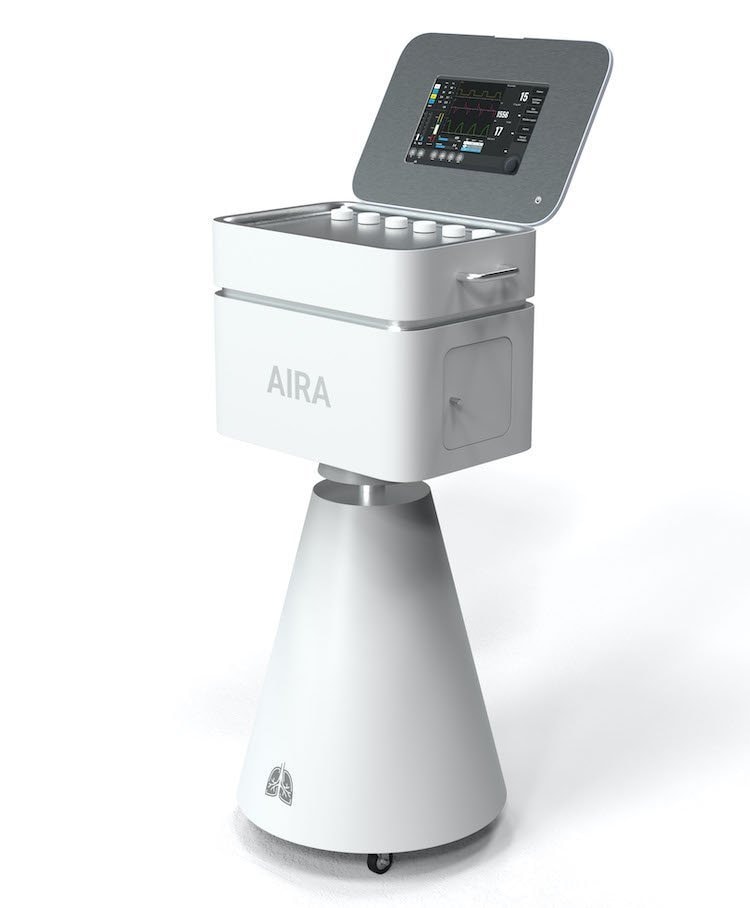Worldwide Sites
You have been detected as being from . Where applicable, you can see country-specific product information, offers, and pricing.
Keyboard ALT + g to toggle grid overlay
When Tyler Mantel’s startup company was put on hold due to the COVID-19 pandemic, he remembered something a mentor once told him: “Only use your time for its highest and best use.” So with his business paused and a talented team of engineers at hand, Mantel was inspired to launch The Ventilator Project to help solve the nation’s ventilator shortage.
Mantel’s first step was to reach out to a former intern for advice about the project. Eager to help, his colleague drove 17 hours straight from Kentucky to Boston to join the cause. “One person led to 3 people, then to 6, and before you know it, you have 250 people,” Mantel says.
“I’m humbled by the outpouring of support. There are people from around the world in all walks of life that have stepped up to address this challenge,” he adds. The diverse group includes volunteers from The White House, Cornell University, Google, the San Francisco 49ers, and many more organizations.
Relying on donations raised through various fundraising campaigns, the non-profit organization is anticipating to manufacture thousands of ventilators by the end of the summer. The first prototype of “AIRA,” as they’ve named the device, took less than 2 weeks to develop, with feedback from doctors helping the team rapidly iterate new and improved versions.
Volunteers working remotely from all over the world hasn’t held back progress. “The things we’ve been able to accomplish in the last few weeks would never have been possible 10 years ago,” says Mantel—adding that teams used Autodesk Fusion 360 and other tools for design and collaboration.
Manufacturing a good quality, low-cost ventilator—at a price point of about $5,000, compared to tens of thousands for typical hospital ventilators—was a challenge well-matched for robotics experts. “The engineering problem was easy to solve—this was about actuating air in a controlled manner,” Mantel says. “The bigger issue was dealing with a supply chain in the middle of a pandemic. And supply chain problems are design and manufacturing problems.”
He and his team looked for ways to optimize AIRA’s design using parts that were easier to source and outside the typical medical supply chain, such as parts for food-grade use. They were also able to speed up prototyping and authorizations through the U.S. Food and Drug Administration’s Emergency Use Authorization, which helps fast-track clearances during public health emergencies.
The current version of AIRA is designed to be manufactured as quickly and cost-effectively as possible. “We don’t want to over-optimize for cost,” Mantel says. “Safety is first and foremost.”
While his team waits for further FDA authorization, Mantel is also looking ahead to AIRA’s future. “We need to know we can quickly get ventilators out to people who need them during future pandemics—something long-lasting that will provide a safety net,” he says.
Mantel is also eager to get back to Watertower Robotics, his original startup company, which uses robots to examine water pipes for leaks to reduce wasted water. “I’m making sure we move ahead with both missions,” he says, “but for now, we’ll focus on solving this major problem for the world.”
Ways to Contribute to
Combatting COVID-19
Our goal is to connect resources and people looking to help with pressing needs. If you have projects or resources that could help communities with COVID-19 efforts, please take the next step.


